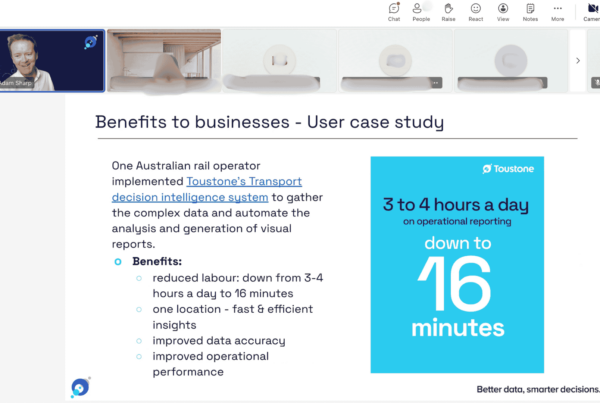We have talked about what it means to be data-driven. When data drives the decisions and actions of your organisation, you are data-driven.
We have also talked about what being data-driven looks like. All of the data you need is presented at your fingertips in automated, visual dashboard reports. Insights are presented to you so you can decide what action to take. No more guesswork or searching for reports. Your entire team works from one source of truth, relying on data to guide decisions resulting in consistent, confident decision-making across the organisation.
But how do you get to that point? Here are five steps to becoming a data-driven organisation.
1. Foster a data-driven culture
Shaping your workplace culture to be data-driven comes from the top down, but it also has to be adopted from the bottom up.
Leaders need to lead by example. Use data when discussing strategy. Walk the walk – don’t let your opinions cloud your judgment but instead commit to relying on the data. Develop data storytelling skills to present a narrative that lets the data lead to your strategies and decisions. As your staff see you leading this way, they will gain confidence to do likewise.
2. Make data accessible and reliable
It is impossible to be data-driven if people don’t have easy access to data and business reports. This applies whether they are in or out of the office. Frustration in accessing the business reports they need to get their job done is one of the top ten complaints from remote workers.
When working from home, accessing office networks is cumbersome. Typically staff need a VPN to access the reports they need on a day-to-day basis – it’s not the same as working from the office. This creates barriers that frustrate staff and slow down productivity.
By utilising the cloud with automated reporting, staff can have easy access to reports from any location. This provides a consistent user experience whether working from the office or at home, removing barriers to productivity.
When rolling out a DI solution, choose one area to start with. You might start by focusing on sales and you can have a reporting solution up and running in 4-5 weeks. Then, you have the opportunity to use feedback to continue to enhance the solution. This helps staff to see the immediate benefits of a DI solution and gets them on board and engaged as you focus on the next department.

3. Maintain a data-driven culture
Based on our experience, if people face roadblocks when faced with organisational change, they quickly revert back to old habits. People are naturally resistant to change. They may need time to adjust to relying on their dashboard information instead of reverting to their old ways.
The key here is strong leadership. Listen to people’s frustrations and respond. Reassure them that if they have an issue with something, it can be resolved. Stay consistent with your commitment to data and embed this in the culture.
Guide people away from building reports to analysing them. Visual dashboards are designed to be easy to use and staff will soon realise they are able to access the information they need much more quickly. Once you go live with your DI solution, be hyper-supportive in responding to and fixing problems quickly before your staff revert to old ways of working.
4. 80% data, 20% gut
Becoming data-driven doesn’t eliminate the need for human input. The human element is necessary to put the insights from data into action. Your team’s experience, reasoning and creativity are needed to make decisions and take action.
Being data-driven means moving from 80% gut and 20% data to 80% data and 20% gut. You still need people to make decisions, but now they are more fact-based.
Quick automated reports put accurate information in the hands of your decision-makers, enabling them to deliver fact-based decisions for better business outcomes.
5. Don’t slow down now; speed up!
By now your staff are getting more comfortable with the new technology and seeing its true value. You’ve led a successful cultural change and are starting to see results. However, this is not the time to get comfortable. Don’t slow down, speed up!
You have deployed solutions for each department. Now is the time to bring them all together to create fully integrated reports and dashboards that streamline your entire business. By doing this, you get a complete overview of your organisation, highlighting KPI’s across the business.
Continue the flow of communication with your staff. Talk to people, maintain motivation and before you know it you’ll have an organisation built on a culture of being data-driven.

How can Decision Intelligence benefit you?
At Toustone, we are passionate about helping every business realise the value of their data and become a data-driven organisation. We work across industries from health care to the meat industry and with businesses large and small. We are excited to see how we could help you harness the power of data and hope these 5 steps gave you some valuable insight into how to be data-driven. Contact one of our team members or request a free demo today.


